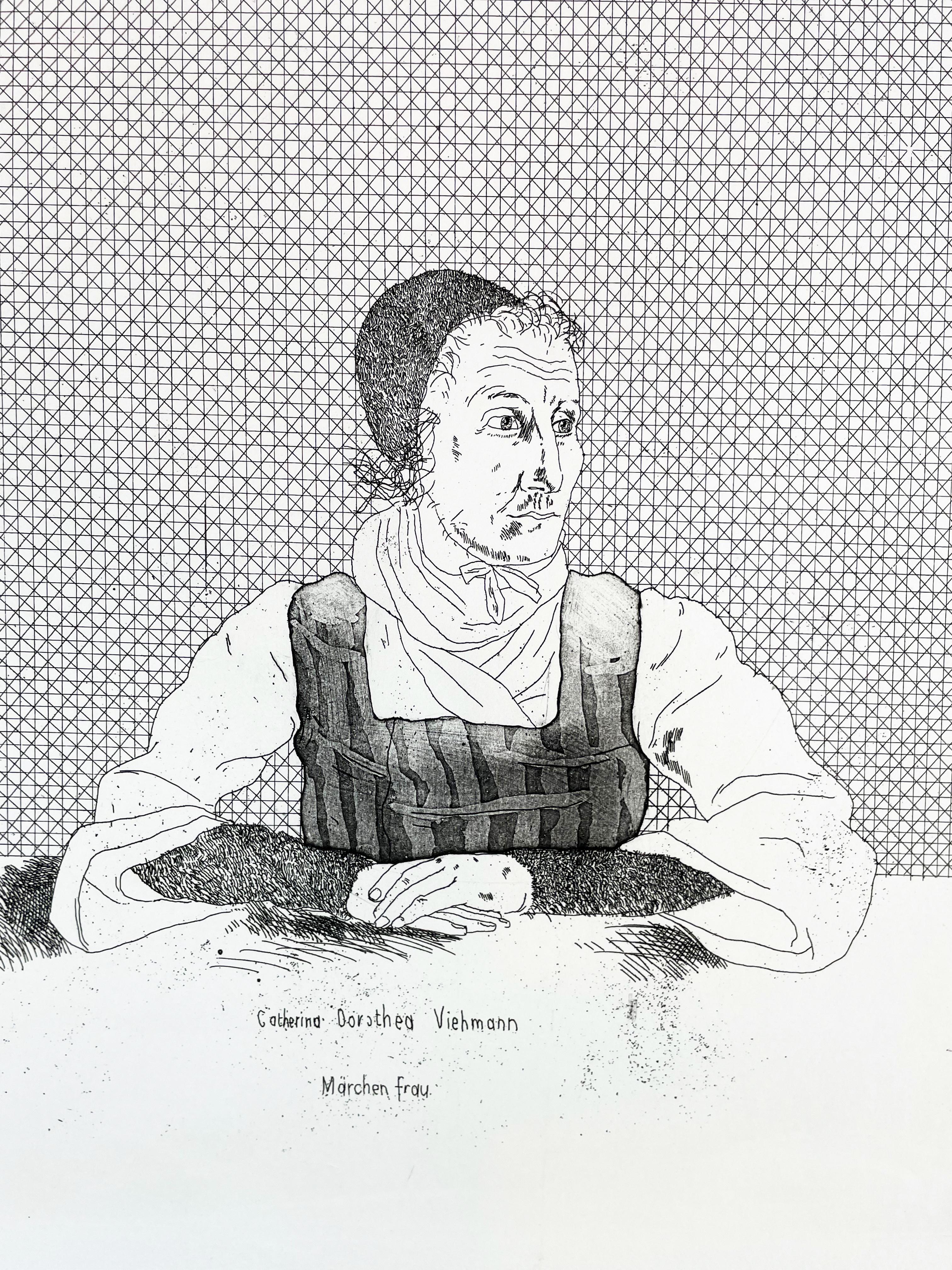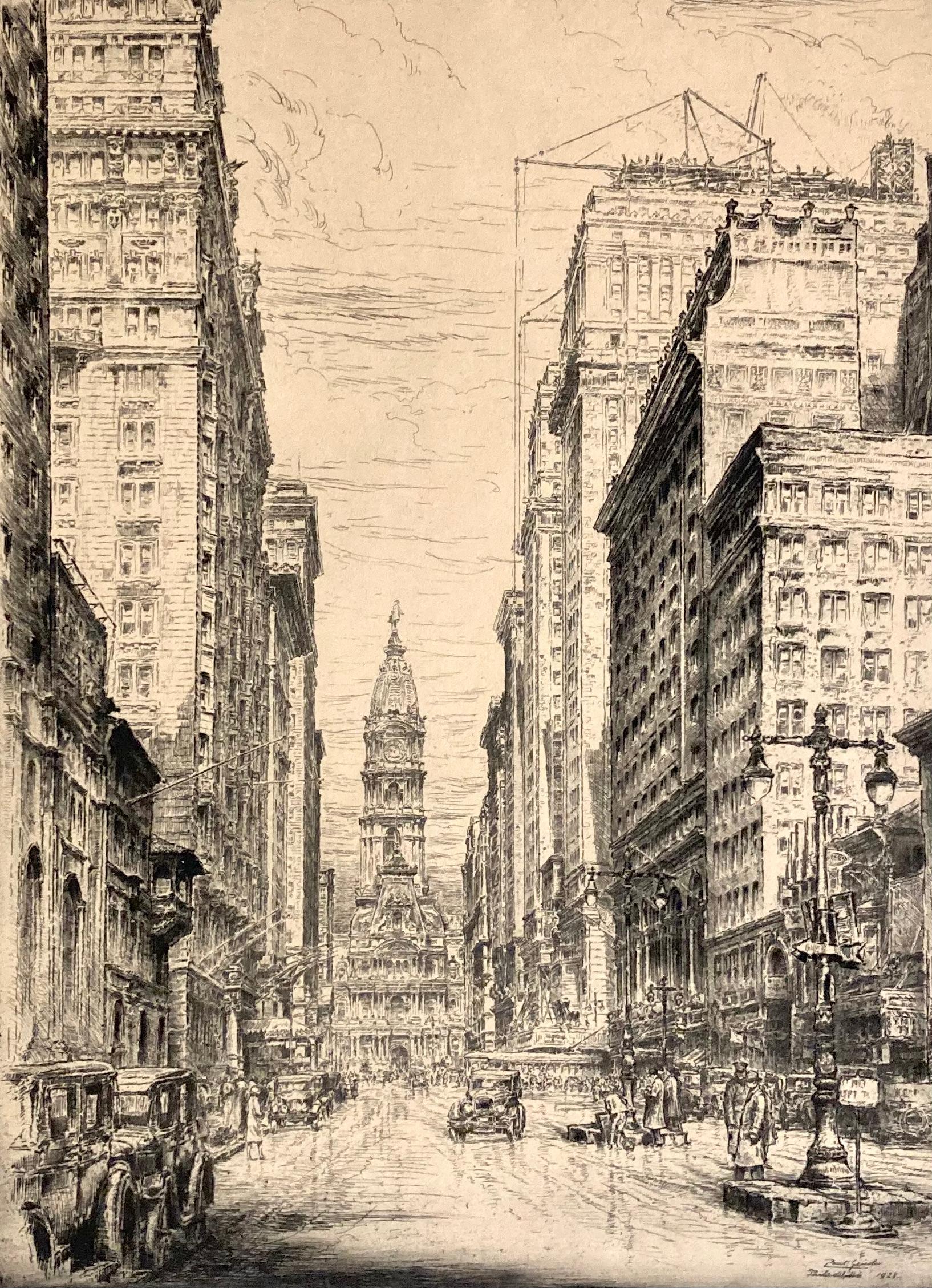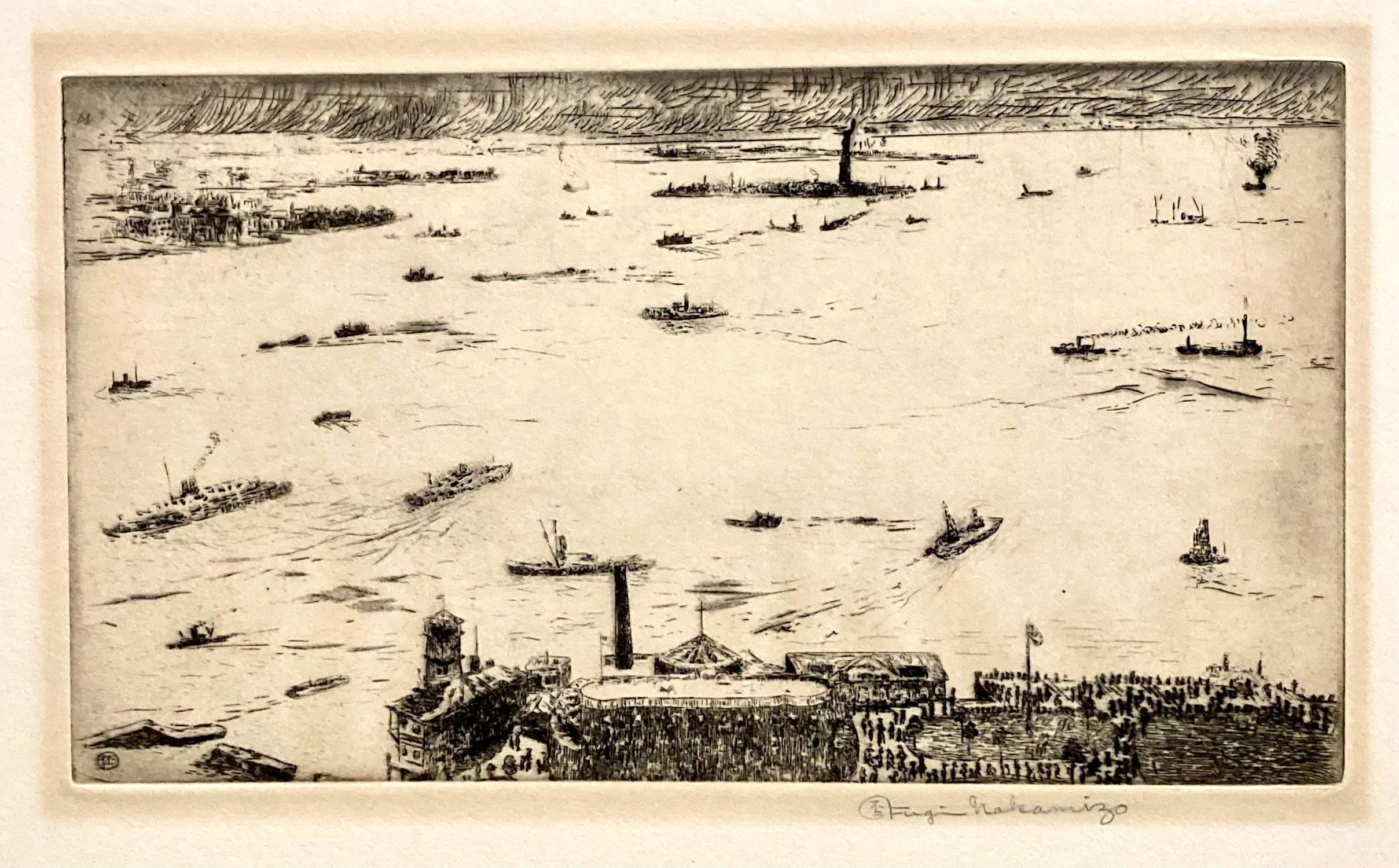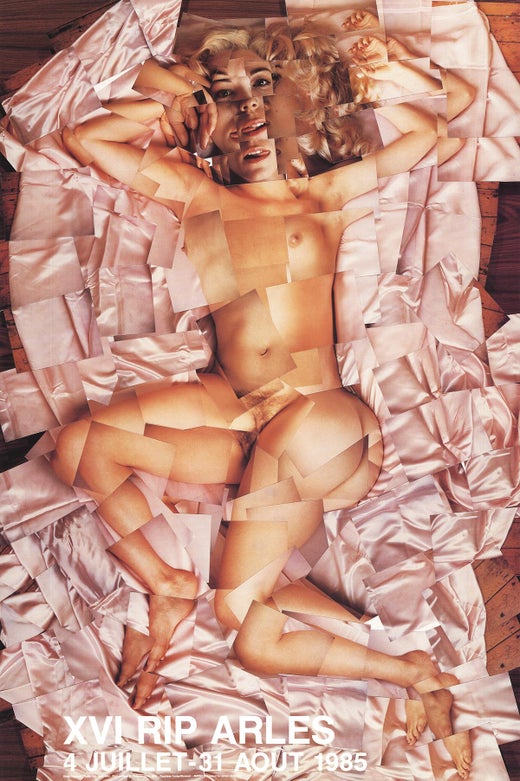David HockneyThe Haunted Castle (Six Fairy Tales from the Brothers Grimm) David Hockney1969
1969
About the Item
- Creator:David Hockney (1937, British)
- Creation Year:1969
- Dimensions:Height: 12.25 in (31.12 cm)Width: 17.5 in (44.45 cm)
- Medium:
- Movement & Style:
- Period:
- Condition:From the publisher's archives. Some waviness along the upper and lower edge of paper commensurate with age.
- Gallery Location:New York, NY
- Reference Number:1stDibs: LU121129354832
David Hockney
The art of David Hockney is always engaging in its pleasant ambiguities: his prints, drawings and paintings are warm but somehow aloof; filled with light yet often dark and brooding in subject; simple, frank and mundane, but also ethereal and complex. The artist’s stature in the contemporary art world is such that, in a 2011 survey of one thousand British painters and sculptors, he was named the most influential British artist of all time.
Hockney grew up in Bradford, in the northern English county of Yorkshire, studying at the Bradford School of Art from 1953 to ’57, and at the Royal College of Art in London from 1959 to 1962. Though he was educated in art at a time when abstraction dominated the field, Hockney stuck resolutely to figurative painting and drawing.
Hockney's early paintings suggest a search for a style, veering from Expressionism to a grotesquerie suggestive of James Ensor. But Hockney found himself almost the moment he arrived in Los Angeles, in 1963. The move from the gray and rainy Britain to a world of bright sunshine and sparkling water brought Hockney a sense of freedom and an artistic epiphany. He would spend most of the next five years in L.A., painting luminous pictures, such as A Bigger Splash (1967), of things that made him happy: swimming pools, manicured lawns, palm trees, stucco buildings and luxuries like shower stalls. Hockney also painted people, almost always his friends. His California portraits such as Beverly Hills Housewife (1966) are considered to be his finest work. They are at once grandly scaled, intimate and poetic.
In the 1970s, Hockney moved back to Britain and spent much of his time on photography and printmaking. He returned to painting in the 1980s, and to subjects like still lifes, seascapes and portraits. Hockney has always been fascinated by the use of technology in art — he’s credited with inventing the technique of joining Polaroid photos in a collage to form a panoramic picture — and has been using the Brush app to paint on an iPad. Because he is prolific and works in a wide range of mediums, Hockney’s art is available at many price points. His consistently striking and provocative work should have a place in any comprehensive collection of contemporary art.
Find original David Hockney art on 1stDibs.
- ShippingRetrieving quote...Ships From: New York, NY
- Return PolicyA return for this item may be initiated within 7 days of delivery.
- Catherina Dorothea Viehman (Six Fairy Tales from the Brothers Grimm) HockneyBy David HockneyLocated in New York, NYCatherina Dorothea Viehman (from Six Fairy Tales from the Brothers Grimm) Etching and aquatint on W S Hodgkinson paper watermarked "DH" and "PP" Paper 1...Category
1960s Modern Figurative Prints
MaterialsAquatint, Etching
- Rapunzel, Rapunzel let down your Hair (Six Fairy Tales from the Brothers Grimm)By David HockneyLocated in New York, NYSheet from “Rapunzel” story (from Six Fairy Tales from the Brothers Grimm) Text printed letterpress and “Rapunzel, Rapunzel let down your Hair” etching and aquatint on W S Hodgkinson paper watermarked "DH" and "PP" Etching 10.5 × 9.85 in. / 26.7 × 25 cm Paper 17.5 x 12.25 in. / 45 x 31 cm Unsigned: apart from the published edition of 400 books and 100 portfolios. This is one of eleven images recently found in our archive which we have decided to make available. There is one only of each image. Perhaps the most famous story from the Grimm Brothers, Rapunzel spins the tale of a beautiful young princess locked away by an evil sorceress. Captured in this scene is the moment a King's son came across the tower and fell in love with her sweet singing, beseeching her: 'Rapunzel, Rapunzel, Let down your hair to me.' Though the sorcerer banishes Rapunzel and maims the prince, they are of course ultimately reunited to live happily together. Hockney illustrates this scene with incredible texture detail: layers of aquatint defining the soft forest floor, delicate hatching on the horse's haunch, the tower's tight crosshatching, and of course the lyrical gesture of Rapunzel's hair which cascades from the upper right corner. This print from our publisher's archives is one of thirty-nine etchings from David Hockney’s 1969 "Six Fairy Tales from the Brothers Grimm". Hockney worked on this series with Paul Cornwall-Jones at Petersburg Press over the course of a year. 400 books and 100 portfolios plus artist’s proofs were printed. The artist illustrated six stories: 'The Little Sea Hare', 'Fundevogel', 'Rapunzel', 'The Boy who left Home to learn Fear', 'Old Rinkrank' and 'Rumpelstilzchen'. According to Hockney, "They're fascinating, the little stories, told in a very, very simple, direct, straightforward language and style, it was this simplicity that attracted me. They cover quite a strange range of experience, from the magical to the moral." He was inspired by earlier illustrators of the tales, including Arthur Rackham and Edmund Dulac, but Hockney reimagined the stories for a modern audience. The frontispiece for the project pictures Catherina Dorothea Viehmann, the elderly German woman who recounted fairy tales to the Grimm brothers when they were in their late twenties. In Hockney's words: “The stories weren’t written by the Brothers Grimm…they came across this woman called Catherina Dorothea Viehmann, who told 20 stories to them in this simple language, and they were so moved by them that they wrote them down word for word as she spoke.” Hockney drew the German woman in the style of Dürer, formally posed yet naturalistic against an impeccably crosshatched swath of grey. Hockney wrote about the surreal plots contained in the Brothers Grimm tales: “…the stories really are quite mad, when you think of it, and quite strange. In modern times, it’s like the story of a couple moving into a house, and in the next door’s garden they see this lettuce growing: and the wife develops this craving for the lettuce that she just must have and climbs over to pinch it, and the old woman who lives in the house next door says well, you can have the lettuce if you give me your child, and they agree to it. And if you put it into terms like this and imagine them in their semi-detached house agreeing to it all, it seems incredible.” Hockney enhanced this unbelievable quality with his illustrations which traverse inky, dense areas of intense crosshatching and minimalist line work. Rather than serving as direct interpretations of the plot, the images capture moments and feelings. Some portray the magic yet mundane -- Rapunzel's tiny face gazing placidly at a well-tended garden, or project danger and unease as in The Haunted Castle, with its citadel perched atop craggy rocks, dramatically lit against a dark sky. Hockney's sense of humor comes through in Cold Water About to Hit the Prince, in which a man tucked into bed stares straight at a rush of water drawn with a splash (this technique is likely Spit Bite, and the resultant bold spattered brushstroke contrasts beautifully with the rest of the carefully crosshatched image). A Wooded Landscape, with its lush textures, conveys the bucolic setting of a fairy tale and the potential danger hidden within the woods -- the viewer is left to wonder who lives on the hilltop in that diminutive cabin. These etchings defy the conventions of beautiful fairy tale illustrations...Category
1960s Modern Landscape Prints
MaterialsEtching, Aquatint
- Study for Tongue Cloud, Claes Oldenburg surreal pop art landscape red and blackBy Claes OldenburgLocated in New York, NYClaes Oldenburg straddles the playful and the obscene in this colorful, spontaneous etching depicting an enormous tongue emerging from the clouds. When printing “à la poupée”, multip...Category
Late 20th Century Pop Art Figurative Prints
MaterialsEtching
- Interior I black, white large Monotype painting of modern minimalist interiorBy Michele ZalopanyLocated in New York, NYPrinted in black and grey, this large scale abstract monotype depicts an interior scene. While Zalopany typically draws with subtle gradations of color and texture, here the artist e...Category
1980s Contemporary Figurative Prints
MaterialsMonotype
- On the Map: Large scale color monotype, Western mountain landscape with blue skyBy Michele ZalopanyLocated in New York, NYLarge scale color monotype of a Western landscape with sapphire blue sky, green trees, river, yellow and orange hills, and red clay cliffs, to enliven minimalist, modern, and contemp...Category
1980s Contemporary Landscape Prints
MaterialsMonotype
- What I discovered in Greenwich ParkBy Michele ZalopanyLocated in New York, NYThis large scale landscape monotype in black and brown features a scene from London’s Greenwich Park, a former hunting park established in the 15...Category
1990s Realist Landscape Prints
MaterialsMonoprint, Monotype
- Paul Geissler, PhiladelphiaLocated in New York, NYPaul Geissler's view of downtown Philadelphia features it's wonderful city hall. Philadelphia is gifted with an actual plan and the city hall itself is a...Category
Early 20th Century American Modern Landscape Prints
MaterialsEtching
- Luigi Lucioni, (New England Barn)By Luigi LucioniLocated in New York, NYPainter and printmaker, Luigi Lucioni was known for his portraits, still life paintings, and landscapes of Vermont and Italy. This 'New England Barn' ...Category
Mid-20th Century American Modern Figurative Prints
MaterialsEtching
- Kent Hagerman, (US Air Force Fairchild C-119, the 'Flying Boxcar')By Kent HagermanLocated in New York, NYWhile this is probably a military airport, Kent Hagerman still shows it at its futuristic best. Hagerman was an amazing draftsman who managed to get fantastic detail into his work. This is really a portrait of a plane -- the Fairchild C-119. The words 'United States Air Force' on the side of the plane date it to 1947 or later, after the Air Force split from the Army. The design featured the 'twin boom' clearly showing in this etching. Thanks to this feature it was called the Flying Boxcar. About 1100 were built and used until 1955. It was also used by the Chinese Air...Category
Mid-20th Century American Modern Figurative Prints
MaterialsEtching
- Fugi Nakamizo, New York Harbor from the BatteryLocated in New York, NYJapanese born, Fugi Nakamizo came to New York City in 1910. He studied at the Art Students League and Cooper Union, NYC, and also printmaking with Joseph Pennell. He worked on the Federal Public Works of Art Project in the 1930s and in the 40s, during WWII, was interned at the Japanese-American internment camp in Topaz, Utah. His work is in the permanent collections of the Metropolitan Museum of Art and the Brooklyn Museum of Art, NYC, and the Library of Congress and Smithsonian Institution, Washington, DC. This etching of New York...Category
1920s American Modern Figurative Prints
MaterialsEtching
- S. L Margolies, Silent SymphonyLocated in New York, NYS. L Margolies (Samuel L.) made dynamic urban views and calm country scenes. This peaceful subject, with snow-covered hills and tidy cabin, Silent Symphony, 1946, marks an end to the...Category
Mid-20th Century American Modern Landscape Prints
MaterialsEtching
- Ernest David Roth, Toledo, The ApproachBy Ernest David RothLocated in New York, NYWorking in the tradition of the Etching Revival, Ernest David Roth made this amazingly conceived and detailed study of the entrance to the Spanish ci...Category
Early 20th Century American Modern Landscape Prints
MaterialsEtching




